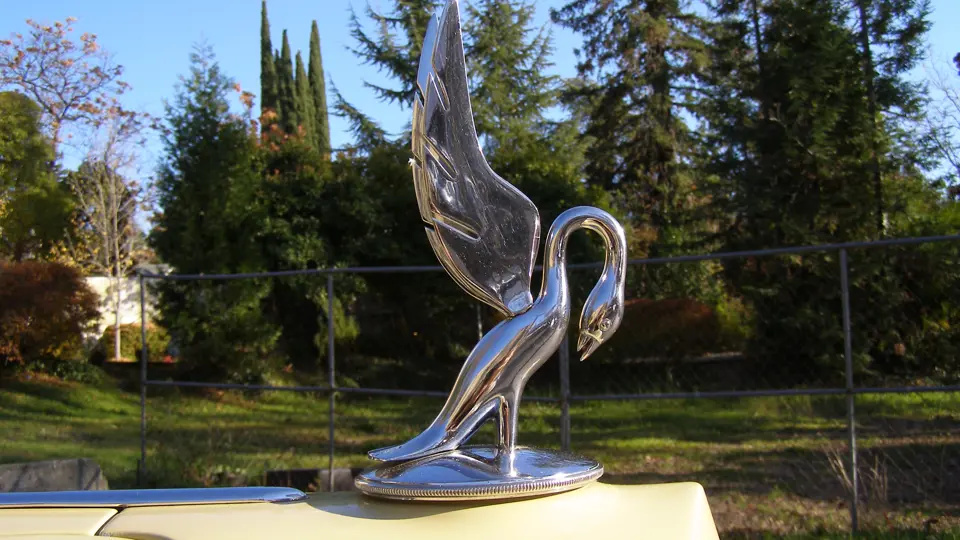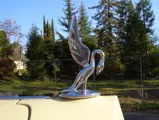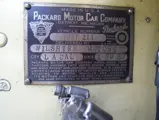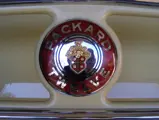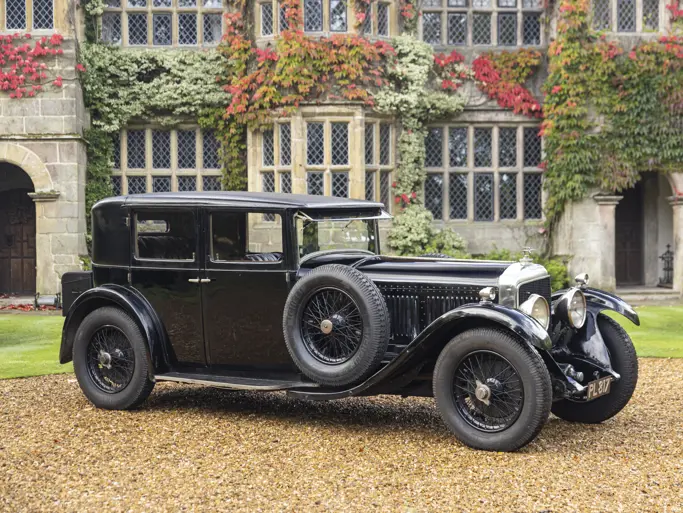Series 1507. 175 bhp, 473.3 cu. in. L-head V-12 engine, three-speed manual transmission, independent coil spring front suspension, live rear axle with semi-elliptic leaf springs, and four-wheel power-assisted hydraulic drum brakes. Wheelbase: 139.25"
• Lovely Full Classic Convertible Victoria with 12-cylinder power
• One of a handful of examples built
• Older, well-presented restoration of a handsome Ray Dietrich design
Among the nicest of 1930s Packards are the Convertible Victorias, four-seat all-weather convertibles with characteristic blind rear quarters that make the rear passenger seat a cozy compartment. Appearing in the late 1920s, the style originated in Europe and was popularized in the United States by coachbuilders like Brunn, Waterhouse, Judkins and Dietrich. Packard added a Dietrich version to the factory custom catalogue in 1929 in the Series 645 Deluxe Eight line. When the 12-cylinder Twin Six was reintroduced in 1932, a Convertible Victoria also appeared in that flagship series, one of 12 standard production bodies and 10 individual custom Dietrich designs.
Introduction of a large engine at the cusp of the deepening Depression may seem like lunacy, but the competition was fierce. Cadillac had debuted a V-16 in 1930, followed quickly by a V-12 version, and Pierce-Arrow and Lincoln had them in the works. Packard’s new Twin Six bore no resemblance to the old 1916-23 V-12. At 445.5 cubic inches it was larger than its predecessor, and with a 67-degree vee it was wider. Most importantly, it vastly outperformed it, with 160 bhp to the old engine’s 90. When introduced in January 1932, an amazing 22 body styles were offered, priced from $3,745 to $7,950, but fewer than 550 V-12 cars were sold during the model year. For 1933 it was renamed simply “Packard Twelve.”
All Packards received new, more streamlined bodies in 1935, when the Twelve gained aluminum heads and a quarter-inch of stroke. The new bodies did not lend themselves to the Convertible Victoria’s truncated tail, but the characteristic convertible roof with blind rear quarters remained, nicely coordinated with sloping contours that also provided a generous enclosed luggage space. For 1936, streamlining became more advanced, with more slant to the grille and more gracefully curved fenders. Closed models moved front door hinges to the “A-pillar,” but open styles, the Convertible Victoria among them, retained the elegant front-opening, rear-hinged doors.
In 1937, coil spring independent and hydraulic brakes were extended from the less expensive series to the Twelve, which also received a vacuum-assisted clutch. Finally, door hinges on all models migrated forward to the A-pillar. Model year production of the Twelve was just 1,300 cars, out of nearly 110,000 of all types.
Delivered new on January 20, 1937, by Wilshire Motors in Los Angeles, this Packard Twelve Convertible Victoria has been in the Seattle area for more than four decades. In a large collection for 20 years, it is an older restoration that has been well preserved. Despite its age, the car presents very well, the Primrose paint showing no flaws. The medium tan leather interior, while showing its age, is entirely presentable and serviceable. The brightwork is all in good condition, and the tan canvas top fits and operates well. Fitted with metal-covered dual side-mounts, the car also has a rear-mounted luggage rack, in addition to the enclosed trunk, providing plenty of capacity for touring.
We are told the engine runs quietly and smoothly, making the car docile for parade use or spirited on the road. It looks sharp, moves smartly and is perfect for the next AACA gathering or CCCA CARavan tour.
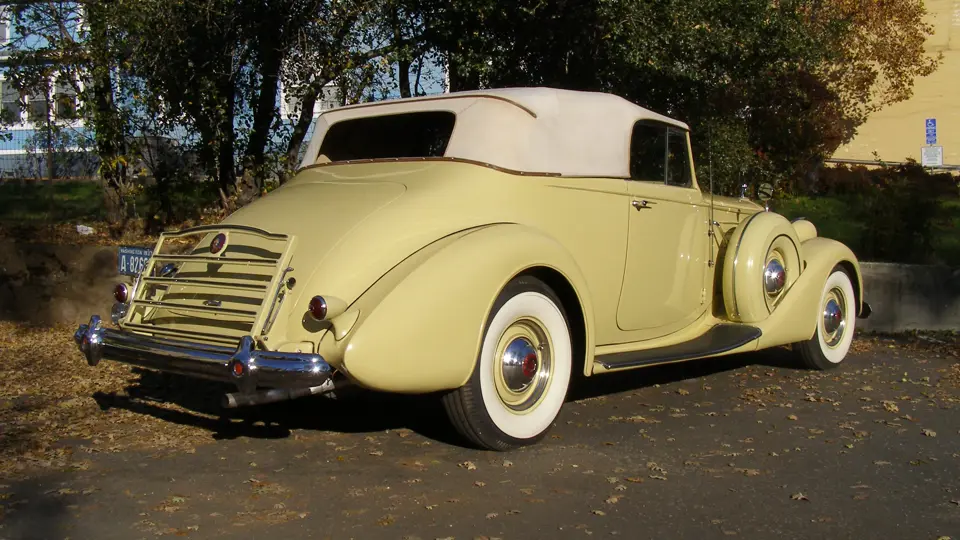



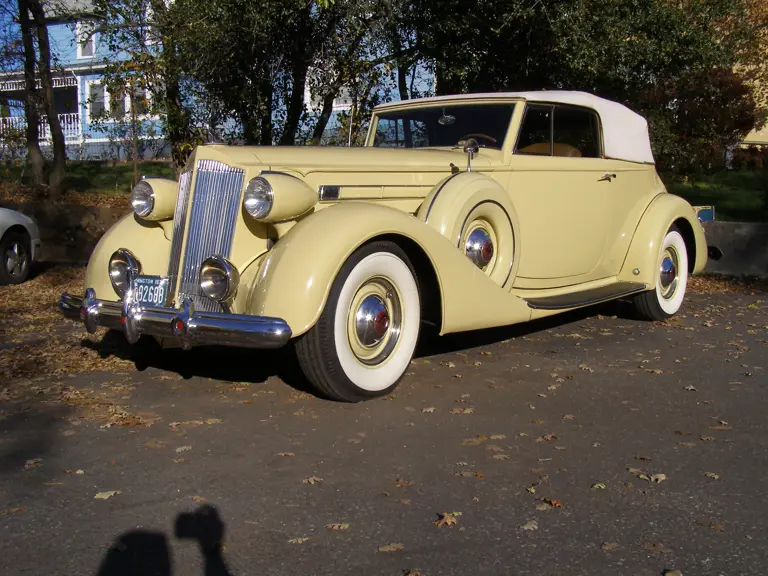

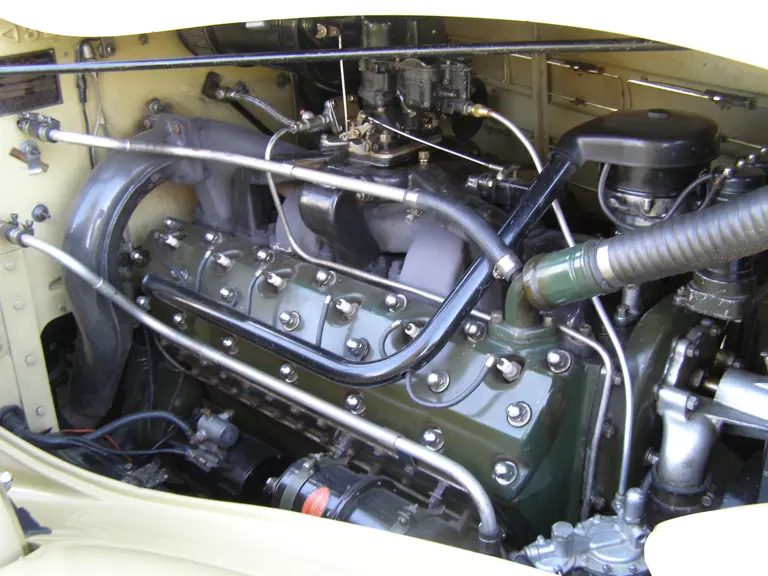


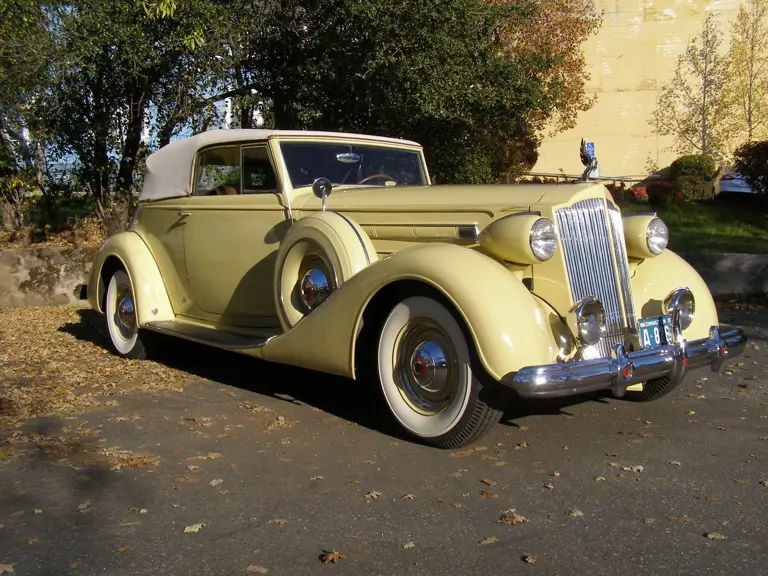




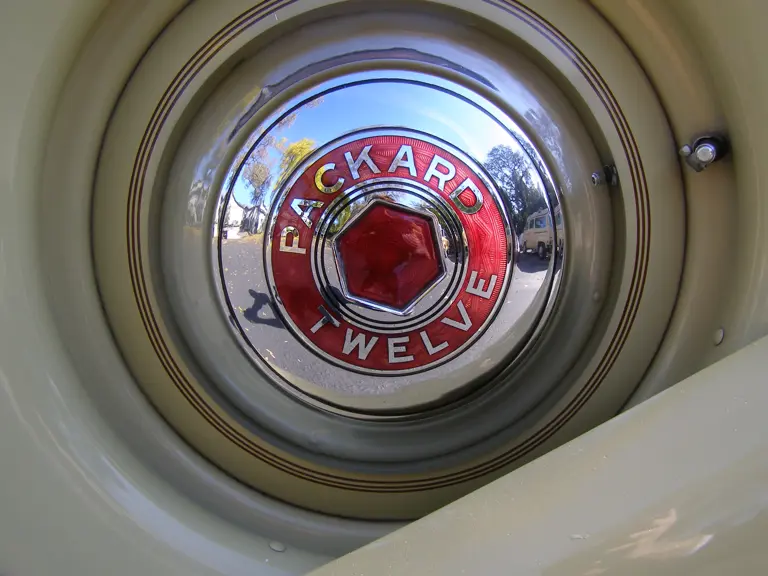


 | Phoenix, Arizona
| Phoenix, Arizona
